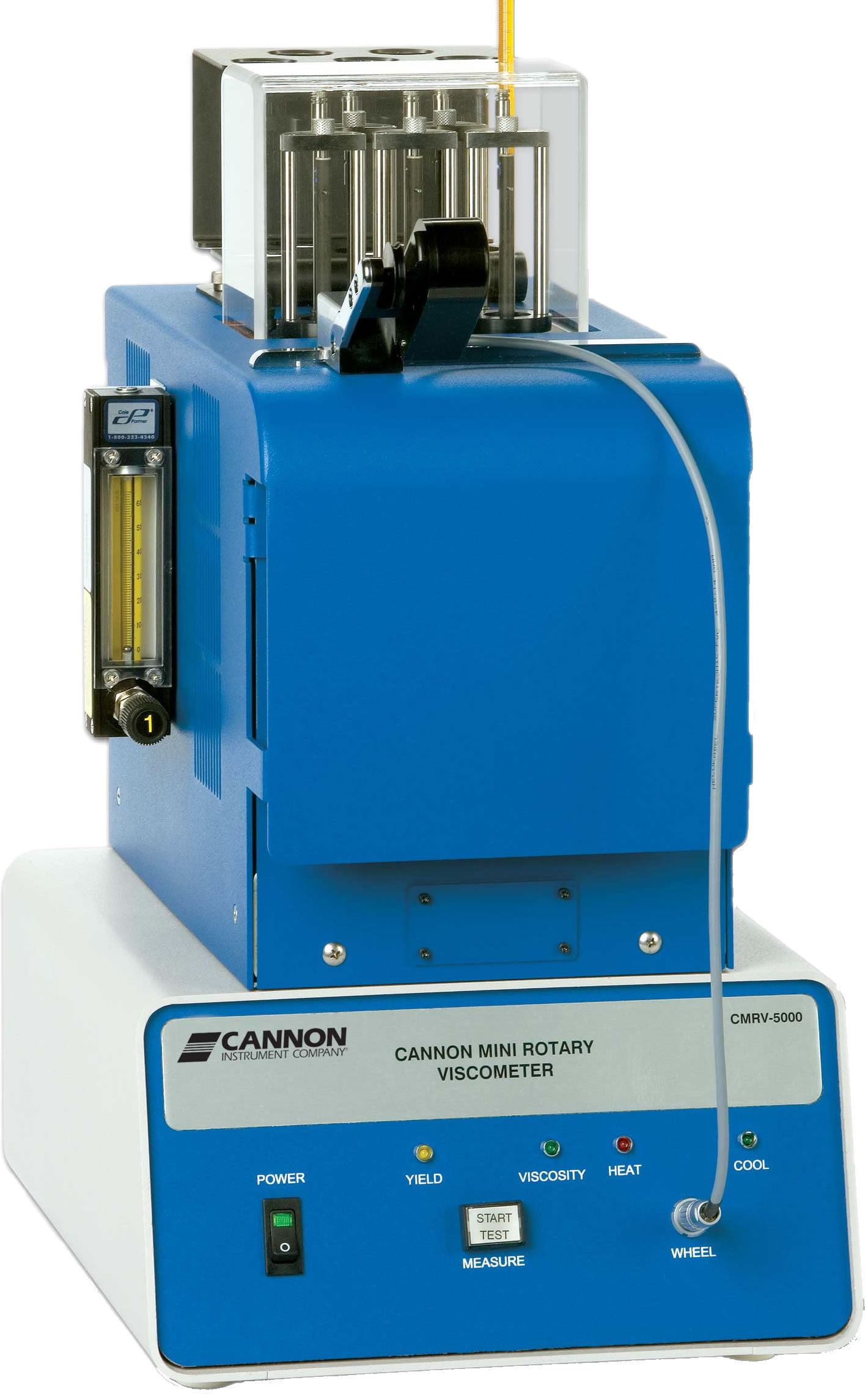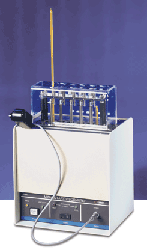| CANNON Product |
| Mini-Rotary
Viscometer (CMRV) |
| ASTM D3829 Standard Test
Method for Predicting the Borderline Pumping Temperature of Engine
Oil |
| ASTM D4684 Standard Test Method for
Determination of Yield Stress and Apparent Viscosity of Engine Oils
at Low Temperature |
| ASTM D6821 Standard Test Method for Low Temperature Viscosity of
Drive Line Lubricants in a Constant Shear Stress Viscometer |
| ASTM D6896 Standard Test Method for Determination of Yield Stress
and Apparent Viscosity of Used Engine Oils at Low Temperature |
 |
CMRV-5000 Mini-Rotary Viscometer
- Self-Contained Air-Cooled Unit — Thermoelectric Temperature Control
Measures Yield Stress and Viscosity for
Drive Line Lubricants and EngineOilsMeets Latest SAE J300 Specifications for
Low-Temperature Pumpability High-Performance Rotors with Carbon Fibre
Shafts in Five Removable Cells for Easy Cleaning
- Meets Requirements of ASTM D 4684, ASTM D 3829,
ASTM D 6821*, and ASTM D 6896
CMRV-4500 Mini-Rotary Viscometer
- Thermoelectrically-Cooled with Enhanced Temperature Control
and Test Precision Measures Yield Stress and Viscosity
- Nine-Cell Capacity/Carbon Fibre Rotor Shafts
|
| CMRV-5000 |
 |
| CMRV-4500 |
| The CANNON CMRV-5000 Mini-Rotary Viscometer is designed to
measure yield stress and viscosity of drive line lubricants and new and
used automotive engine oils over a temperature range of –5°C to –40°C,
meeting ASTM D 4684, D 3829, D 6821 and D 6896 requirements. The CMRV
instrument determines pumping viscosity in accordance with the latest
SAE J300 specifications.
The CMRV-4500 contains nine small rotary
viscometers within a thermostated aluminum block. The CMRV-4500 is
cooled with built-in thermoelectric modules, eliminating the need for
methanol-based external refrigeration devices. The CMRV-4500 uses a
compact air/water heat exchanger that circulates a mixture of coolant
water and antifreeze through the instrument to cool the hot side of the
thermoelectric cells. The result is a quiet, low-maintenance system
without potentially hazardous refrigerants. Solid-state thermoelectric
cooling provides superb temperature uniformity for all nine test cells,
removing temperature gradients not only from the left to the right side
of the block, but also from front to back and top to bottom. A dry gas
purge includes a side-mounted flow meter with a needle-valve adjustment,
the resultant dry air flow to the test environment helps improve
precision and avoid condensation around the test cells.
|
|